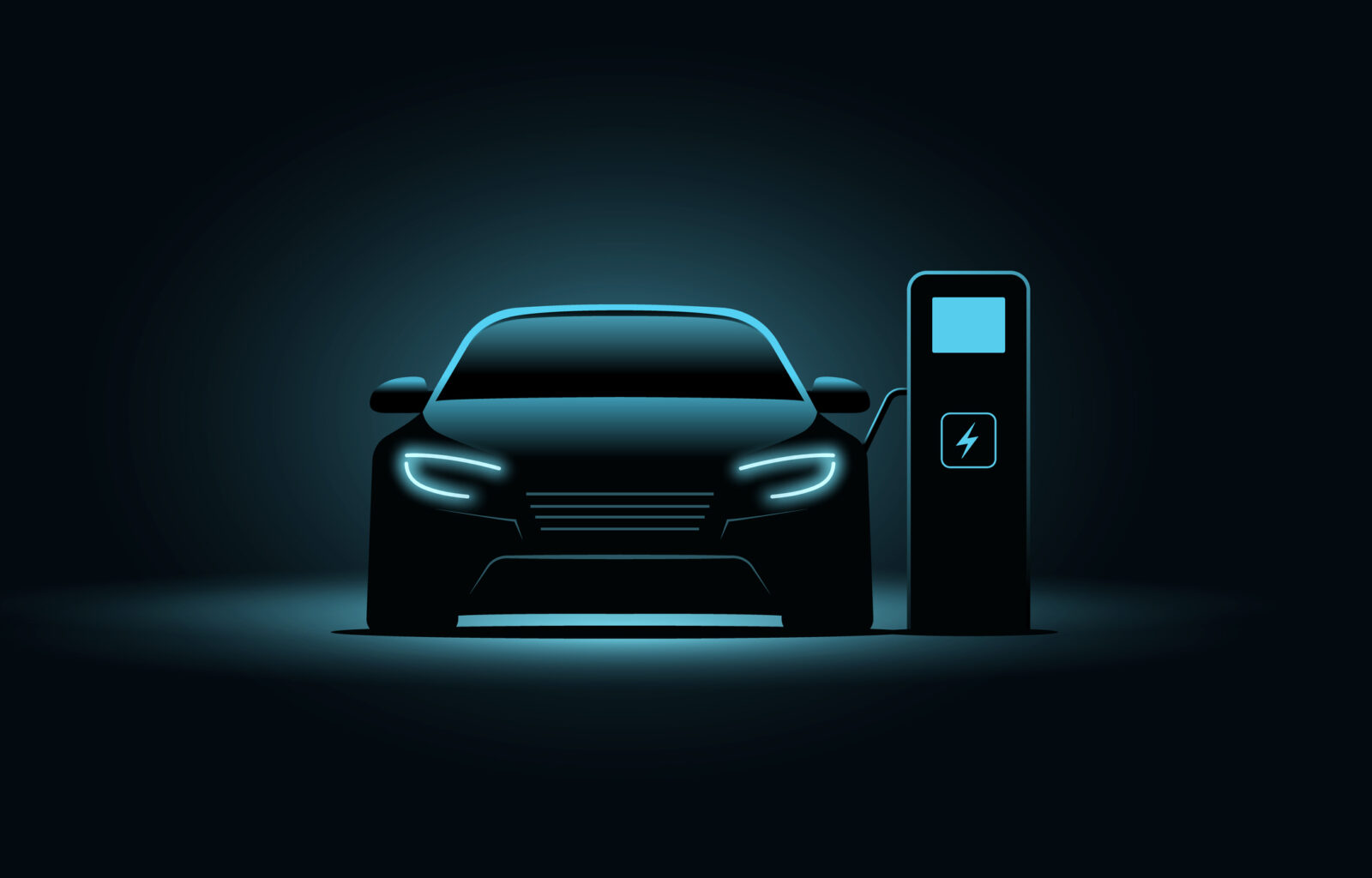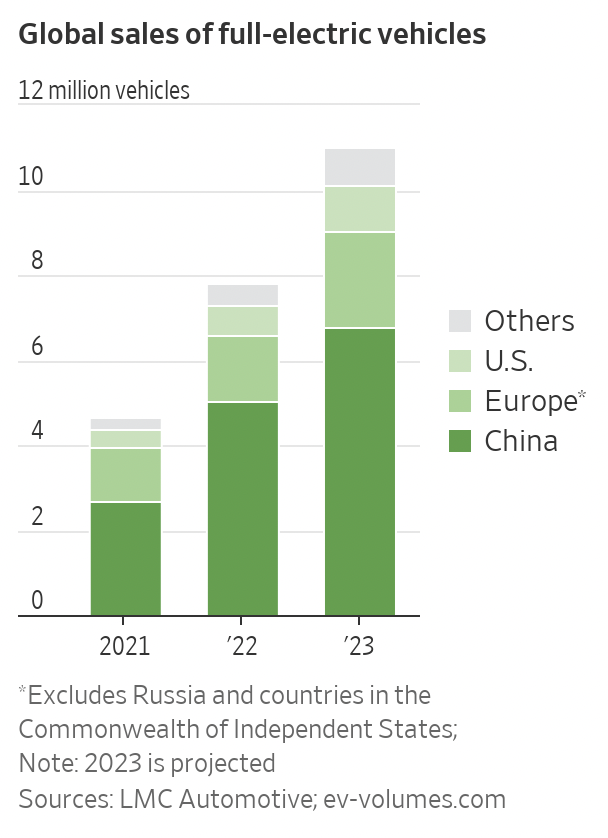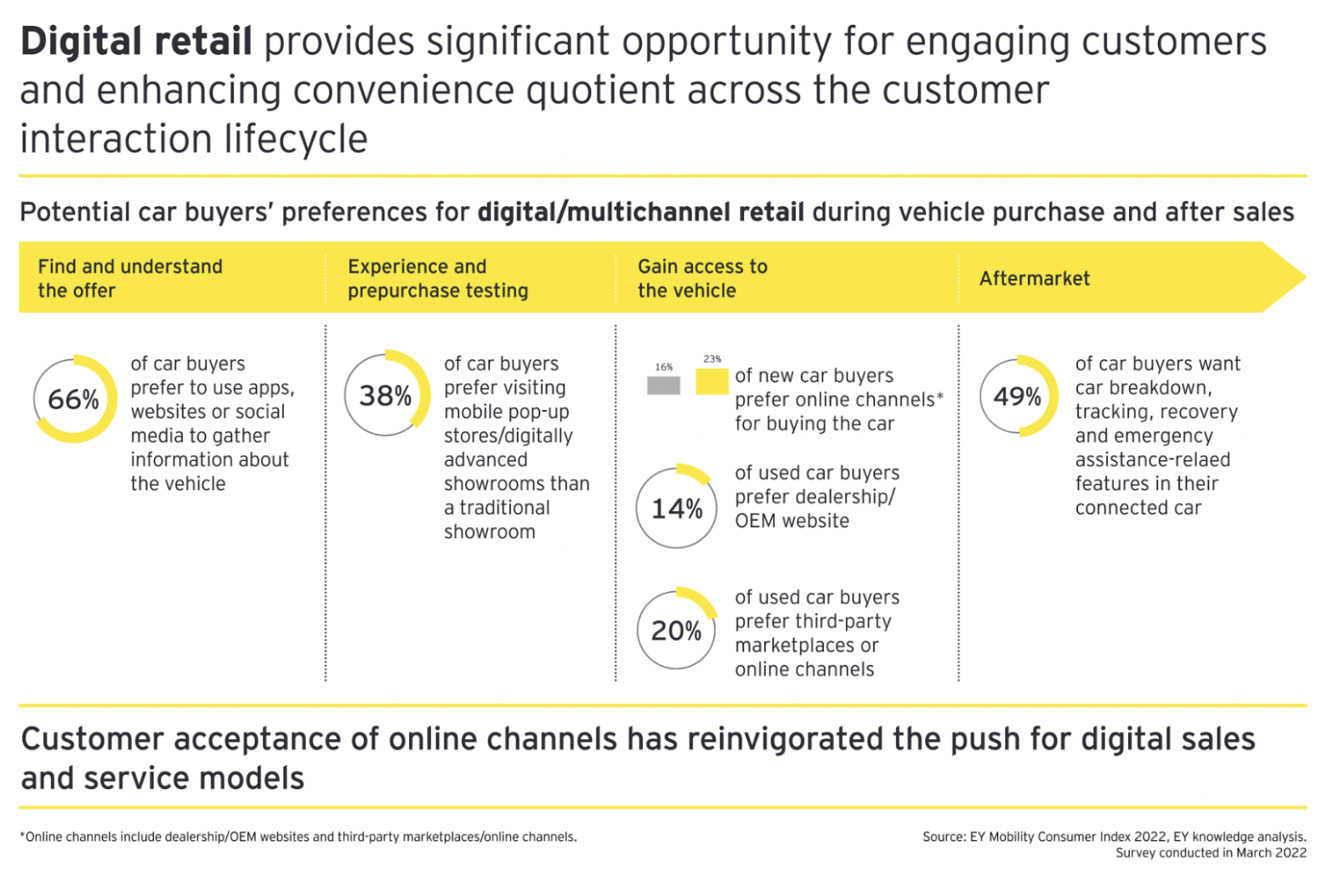 Car buyers increasingly expect a seamless digital customer journey. Consumer expectations for a personalized shopping experience are at an all-time high, and the digitization of everything isn’t so much a trend as it is the new retail reality. Digital retail supports car buyers in their path to purchase seamlessly between online and in-person interactions. The latest EY Mobility Consumer Index (MCI) study shows that automotive digital retail is being driven by the rise of the electric vehicle.
Car buyers increasingly expect a seamless digital customer journey. Consumer expectations for a personalized shopping experience are at an all-time high, and the digitization of everything isn’t so much a trend as it is the new retail reality. Digital retail supports car buyers in their path to purchase seamlessly between online and in-person interactions. The latest EY Mobility Consumer Index (MCI) study shows that automotive digital retail is being driven by the rise of the electric vehicle.
This post is sponsored by Ernst + Young UK. As always, all opinions are my own.
The majority of car shoppers use digital platforms
The study indicates that up to two-thirds of all car buyers now use digital channels (apps, websites and social media) to gather information about their prospective purchase. That figure rises to 71% for EV buyers, reflecting both the greater digital fluency of EV customers and their desire to thoroughly research their purchase.
Digital retail provides a significant opportunity to engage customers no matter where they are in their purchase journey. A digital sales model enhances the car shopping experience and helps facilitate completion of the sale. Customers don’t just want a unified experience – they now expect it. With the rise in EV sales driving digital retail, retailers profits could be at risk when shoppers can’t choose their own paths to purchase.
2023 will be a big year for electric vehicles.
Electric vehicles made up 10% of the market for the first time in 2022. 7.8 million vehicles sold in 2022 were battery-electric. This is a 68% increase from 2021, according to preliminary research from LMC Automotive and EV-Volumes.com, research groups that track automotive sales.
This year, global sales are projected to exceed 10 million. China and Europe are the frontrunners, and while the US makes up less than 10% of this number (and makes us a laggard in the near-term), it indicates massive opportunities ahead.

Ongoing challenges to full acceptance of an end-to-end digital path-to-purchase.
Today, there is no single path to purchase for car buyers. Instead, consumers expect a personalized buying process that can pick up and start anywhere and often spans multiple devices.
Retailers that don’t align with rising expectations could be wasting time and leaving a lot of money on the table. In fact, a recent analysis of Dealer.com data showed that dealers who allow shoppers to start the buying process online were earning 25% higher profit per deal.
Retailers and their team members would do themselves right by incorporating more of the holistic approach to sales, rather than focusing on one slice of it. Whether we admit it or not, the traditional retail model treats each deal as a transaction. That doesn’t bode well for future hyper-connected sales relationships.
Investment is needed in resources to ensure salespeople are better equipped to meet the customer where they are, throughout the entire process: consideration > shopping > purchase > after care.

Digital retail is a business model, not just a software solution.
Digital retailing adoption continues to accelerate as the auto industry moves into a new post-pandemic normal. Electric vehicles have caused an industry-wide shift in the relationship between consumers, dealers and OEMs.
I talk to car people everyday. I see a lot of exhausted, bewildered people who are wondering what’s happening to their traditional retail operation. Change is never easy, especially in this transitional environment where one deal – one customer interaction – may look completely different from the next. OEMs could derive great benefits from providing in-depth training on these changes and assisting their dealers in the transition to this new business model.
Changes bring more dealership operational challenges
Changes to the traditional sales model mean challenges for car dealers. Taking a holistic approach unites the digital and traditional components of store operations and often means restructuring long-held beliefs. Outdated behaviors and processes constitute change and employees play a significant role in any plan towards auto retail digital transformation.
I honestly think many decision makers are glossing over (maybe it’s denial?) the huge shifts that are happening. Training at the manufacturer/OEM level and at the dealership level should support dealers and their staff through the difficult challenges of reimagining a 70-year-old business model.
Additionally, most dealers are contending with a myriad of software solutions, which, as many clients share with me, is more than challenging. I’m seeing some dealers smartly reducing their vendor list in order to cope with the seemingly never-ending amount of dealership management solutions.
Building and maintaining great vendor relationships has many benefits but finding a trusted vendor is like discovering gold. If you can maintain a shorter list of trusted vendors, it reduces costs, increases efficiency and minimizes price volatility.
Digital retail staffing challenges
Ongoing people/staffing challenges related to automotive digital retail operational changes require a rethinking of our business structure from top to bottom.
It’s never comfortable being in the middle of a transition and the changes don’t stop with auto retail. We’re all experiencing change/transition in some way – a job change, relocating, relationships ending or changing, and more – and going “back to normal” just isn’t an option.
Retailers are finding themselves face-to-face with the inevitable evolution to an increasingly digital buying model. Thanks to great strides in innovation, new electric vehicle models are being introduced at a faster pace than past years and EV sales will continue to increase. As the study reveals, the catalyst to digital retail (the “new normal”) is the electric vehicle buyer.
The majority of dealers are embracing digital capabilities to better serve their customers. For those that haven’t, what will they do when their competitor embraces processes that make it easier for consumers to complete 100% of the transaction without having to visit a dealership?
How can auto retailers embrace digital transformation?
Ironically, it’s by capitalizing on the human experience. Retailers must think critically about how every digital action will affect the experiences of customers and employees. Too often, the focus on the tools and technology takes precedent and this imbalance has far-reaching effects.
The biggest barriers to a successful digital retail are people issues. Lack of leadership, resistance to change, staffing mismatches, recruitment issues, lack of digital fluency and outdated training.
Instituting the necessary digital retail technology to deliver a frictionless experience that doesn’t require a visit to the dealership is a massive undertaking and employees are at ground zero. Focusing on process, workflows and training is key.
Attention to the human experience creates better customer experiences, improved processes and ensures transformational retail operations including stronger financial performance.
Vehicle manufacturers are actively pursuing ways to deliver innovative technologies that consumers want. As a retailer, embracing innovation and evolving with digital retail will clearly help guide you through digital transformation. It will set your organization on a profitable course that is positioned to overcome many of the challenges we see today and on the horizon.
This post is the first of four sponsored articles exploring the results of the Ernst + Young MCI study, along with my own insights on how those results can be useful to retailers’ automotive digital retail strategy. Contact me here for guidance or questions.
